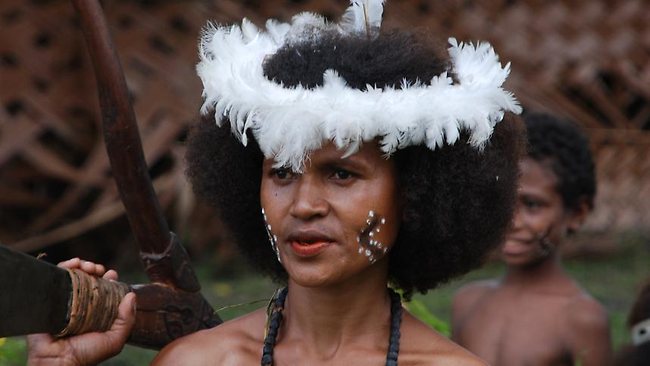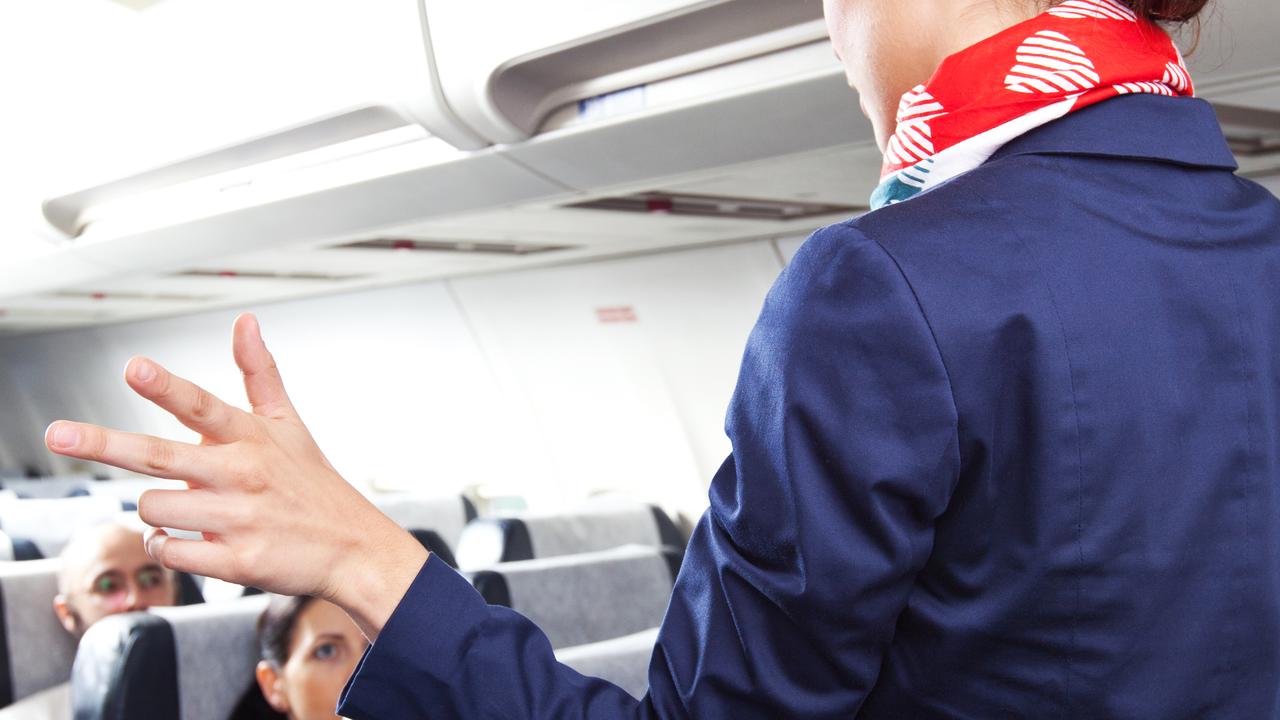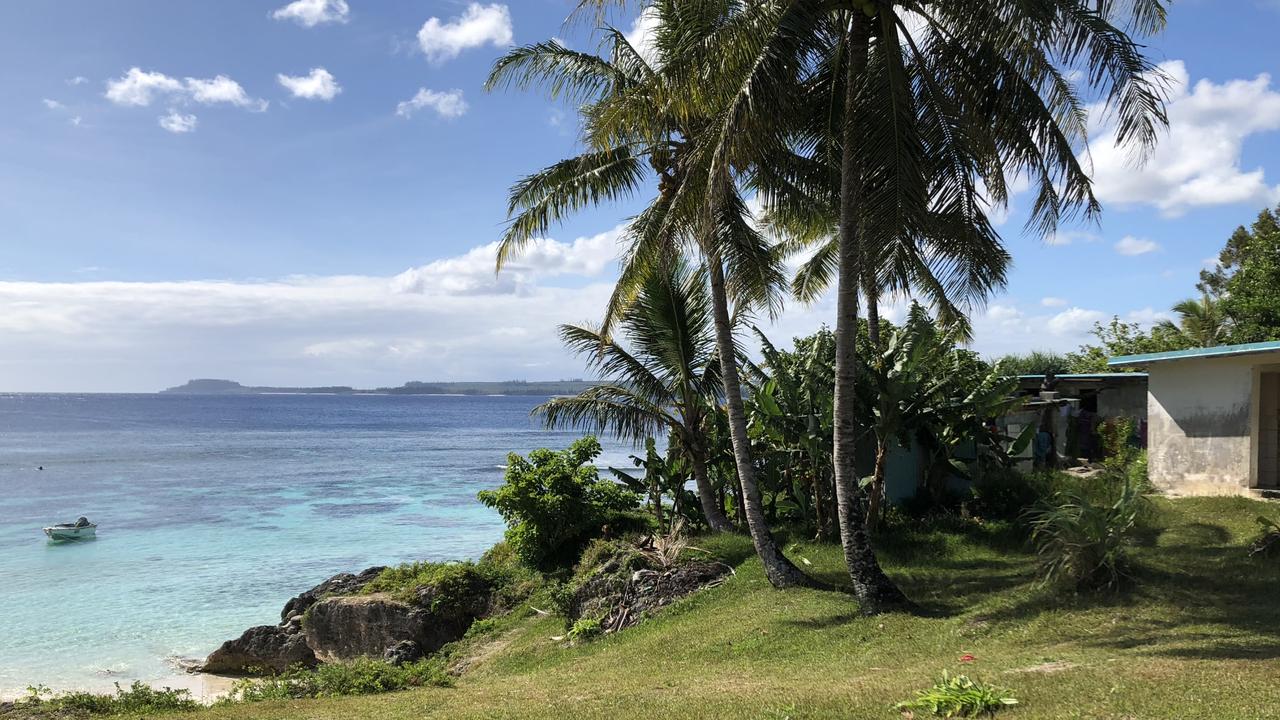White boys prove they can paddle in Waga Waga, Papua New Guinea
I'M IN the tropics of PNG stripped to my waist, but in present company, I feel completely naked - I'm a skinny white boy attempting to row in a war canoe

I'M IN the tropics of Papua New Guinea stripped to my waist. But in present company, I feel completely naked.
I'm a skinny white boy (although thickening from age) without any defined muscle.
Nonetheless, the row of dark, glistening, sinewy tribesmen eyeing me off are prepared to accept me into their fold.
And now the whole village of Waga Waga is excitedly crammed along the shore, some hanging from the trees, to witness a stray from cultural tradition - first white boy, among warriors, to row in their war canoe!
Respect.
Adoration trumps shame.
But I can't take all the credit. With me are two other skinny white boys but in varying shades of pink courtesy of the PNG sun. Perhaps there's a little bit of colour from anticipatory flush too.
The village of Waga Waga is in full-swing preparing for the upcoming National Canoe and Kundu Festival, which takes place annually on nearby waters.
A highlight of the festival is the war canoe race. And us white boys have been kindly invited to help out with the training session. Gulp. And to create some afternoon entertainment, I expect.
Three buffed local boys offer up their positions on the 27-seat war canoe and hand us their oars, which might double as dangerous spears if we fail to impress.
I can't detect any envy from the girls travelling with us, who grin from the safety of terra firma. They've been saved by tradition women aren't allowed on war canoes.
We begin our paddle along the village waters to crowds that now look denser. But the word "paddle" doesn't do justice to the strain and grunt that has already begun. This is no frivolous matter.
With not so perfect rhythm (no need to identify culprits), we almost make it to the rusty WWII shipwreck, Muscoota (now a top diving and snorkelling spot), before turning back.
And then the exertion ramps up a notch. Grunting becomes a song of its own. With full force, we glide closer to the shore, past the cheering crowds. Visible signs of men in pain appear to be a real crowd-pleaser.
And just when I think my culturally significant experience might be over, the "guests" are asked to do it all over again.
I'm perilously close to embarrassing Team Western World.
Eventually back on shore, I'm too faint to fully appreciate the sounds of kundu drums, traditional dance, costume and song a full dress rehearsal for the festival.
Papua New Guinea is one of the most culturally diverse places on Earth with more than 600 tribes and 800 languages. The National Canoe and Kundu Festival is a rare opportunity to experience such diversity of colour, pattern, custom and canoe all wildly different.
Across the bay from Waga Waga (about 30 minutes by boat) is the capital of Milne Bay Province, Alotau, where the festival takes place.
Alotau is not just a cultural haven. The tiny city is also gateway to PNG's tropical island paradise 600 islands, cays and atolls spread over 250,000sq km of ocean. For decades, divers and snorkellers from around the world have been exploring the renowned underwater treasures. Tawali, a dedicated divers' resort, which straddles rainforest, volcanic bluff and coral reef, is testament to its paradisiacal ways.
Milne Bay Province, which occupies the extreme southeastern peninsula of Papua New Guinea's mainland, is home to some of the remotest communities on Earth.
And when these communities need supplies or want to sell goods, they head to Alotau.
Hence, Alotau is a bustling trading port that boasts colour and vibrancy. The harbour bobs with canoes, ferries and houseboats while the streets carry people and wares, either to sell or for personal stock.
For trade, makeshift stalls, shaded by bright coloured umbrellas, are set up on the shores, or in the nearby, purpose-built undercover market. Talented Trobiand Islander woodcarvers sell exquisite ebony carvings while others sell fish, fruit, vegetables and the ever-popular betel nut.
Alotau people are well-known for their curious and friendly nature. Indeed, I easily strike up conversations at the market and in the evening over well-earned SP beers.
The prettiest spot in town, favoured by locals too, is a waterside manicured park, which betrays the savage history of the area. During World War II, about 900 Australian and allied forces were stationed around Alotau, fighting Japanese who were trying to secure a base.
The Japanese were defeated, but 1200 people died in the Battle of Milne Bay. The cenotaph in the Australian war memorial park is one of many memorials and war remnants in the area.
The old military airstrip is now the main airport, Gurney named after an Australian pilot killed in action.
Other airstrips in the area have become memorials, with information plaques that tell of the historic battle. It is here that the Japanese were defeated on land for the first time during the Pacific War in 1942.
Along a nearby beach, at the most westerly point of Milne Bay, a Japanese barge wreck, Diahatsu, marks the spot where the first shots of the battle were fired.
It almost seems befitting that rusty sunken warships have given birth to new life in the form of beautiful coral reefs teeming with schools of fish.
For more colourful twists from the past, I head to one of the "skull caves" around Milne Bay.
Having pushed past flowering red orchids on a coastal track lined with fallen coconuts, I arrive at a dark entrance to a limestone cave. Torchlight reveals beautiful, shimmering stalactites. But at the bottom of the glittering quartz curtain is a pile of human skulls. Two hundred of them.
There is much myth surrounding the origin of the skulls which, you might expect, includes rituals of cannibalism.
PNG is a destination surrounded by myth, mystery and the unknown. But how else can it be PNG truly is one of the last great frontiers on Earth.
And for the record, white boys can paddle.![]() Travel Tips: PNG destination guide
Travel Tips: PNG destination guide



